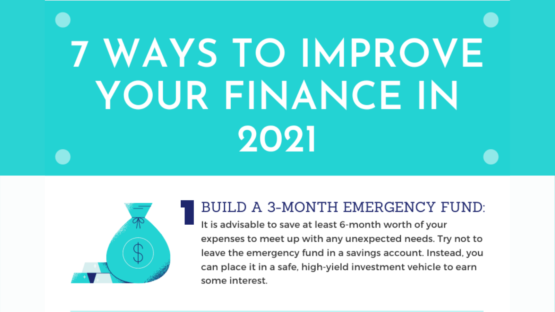Knowing how to build your emergency fund can help you navigate through unexpected life events without having to worry about your finances. It’s a vital component of any good financial plan and one way you can improve your finances this year considering the events of 2020.
What is an emergency fund?
An emergency fund refers to money set aside to cover expenses that may arise with unplanned events, like sudden medical emergencies, or unemployment. It provides a safety net for your finances. It differs from a sinking fund which is money saved to cover upcoming expenses. Having an emergency fund comes with many benefits to your financial health, that’s why it’s important to know how to have one. It’s usually advisable to build one that can cover 3-6 months of your expenses.
How do I start?
1.Analyse your current expenditure
The first step is to analyse your income and expenditure. This should tell you how much you spend each month. Multiply the amount by 3, and it will give you your initial savings goal. This amount should cover all your basic living expenses for 3 months (feeding, accommodation, transportation). Depending on your financial situation, you can aim to save up for a 6-month emergency fund.
2. Develop a savings plan
Saving consistently for an emergency fund isn’t as easy as it sounds. Depending on your earning potential, it might take a bit of time to reach your goal. The best way to save up before any unexpected occurrence hits is to devise an effective savings plan based on step one and stick to it. You know your savings target, choose a percentage of your income you can contribute monthly to build your emergency fund.
3. Choose where to keep your emergency fund.
It is not advisable to keep your emergency fund in the same account with your regular savings. It also shouldn’t be tied up in any long-term fund. We recommend that the emergency fund is kept in a high-yield savings account or a safe, highly liquid investment vehicle for easy accessibility, and to earn interest on your savings.
4. Pay yourself first
The easiest way to save is to make it automatic. Automate the process so your savings are taken care of as soon as you get paid. This should help you grow your fund faster so you can focus on other financial goals. You can also decide to revisit your budget and cut costs, or explore new ways to earn more so you can increase your regular contributions.
5. Assess and adjust your contributions
From time to time, check your emergency funds to review your progress. If there is a positive change in your earning, it should reflect in your savings percentage. Your contributions should be revisited and adjusted when necessary to ensure you are on track to meet your goal.
Start now and save whatever you can. Once you have a fully funded emergency fund, you can redirect your efforts to reaching other savings goals. Your emergency fund should be for emergencies only. If the need does arise to dip into it, spend it carefully and replenish it as soon as possible. If 2020 has taught us anything, it’s to be prepared for the unexpected.


